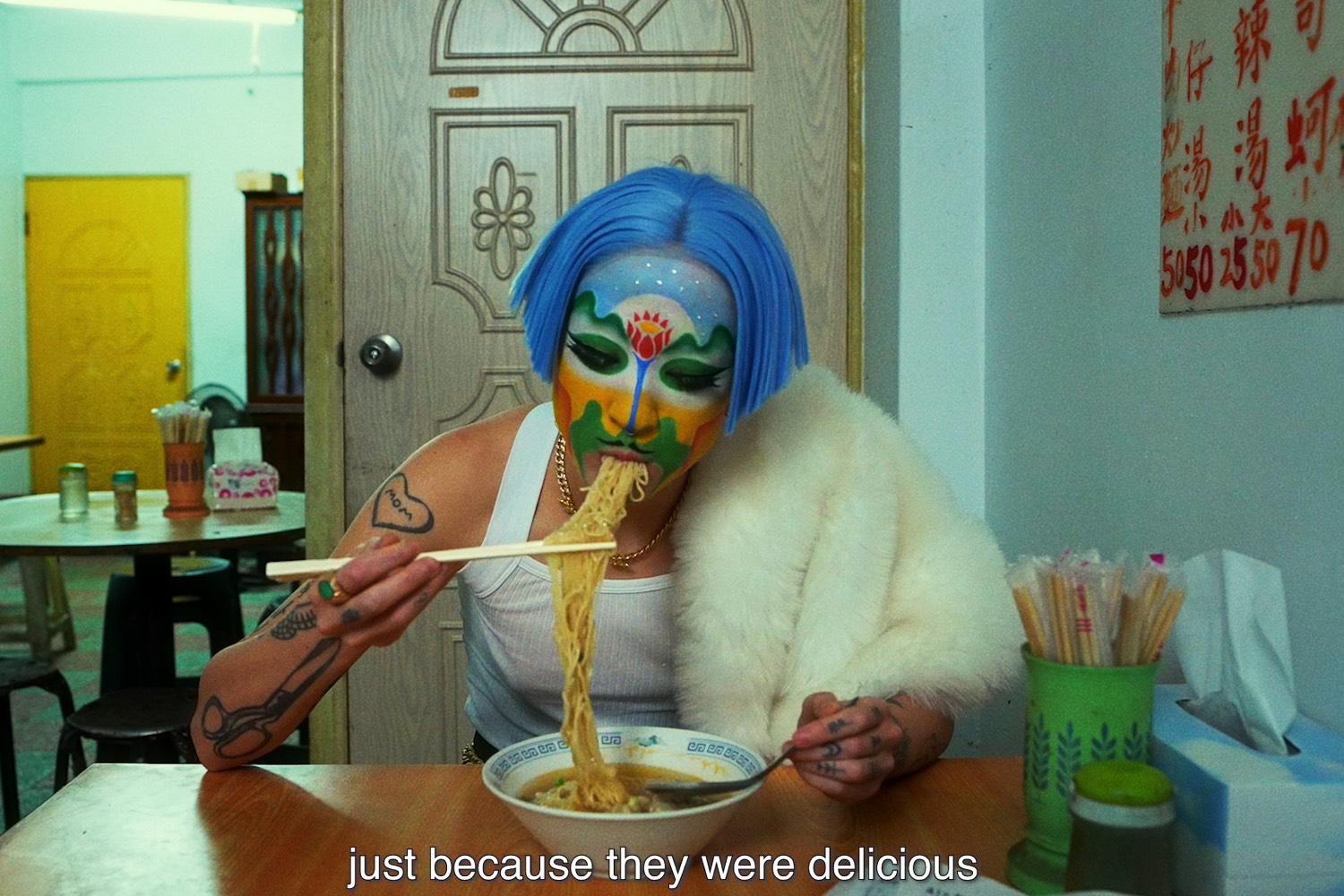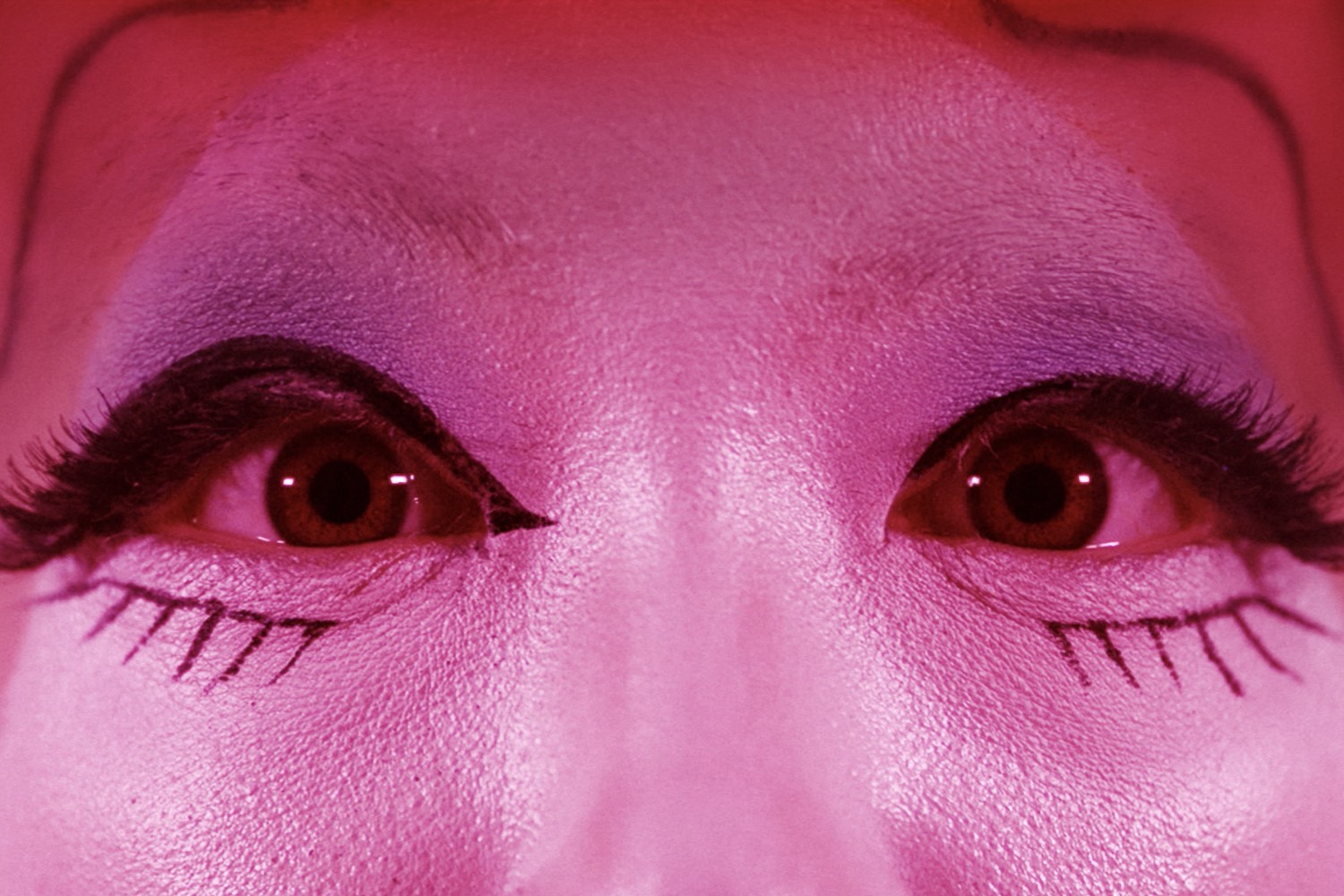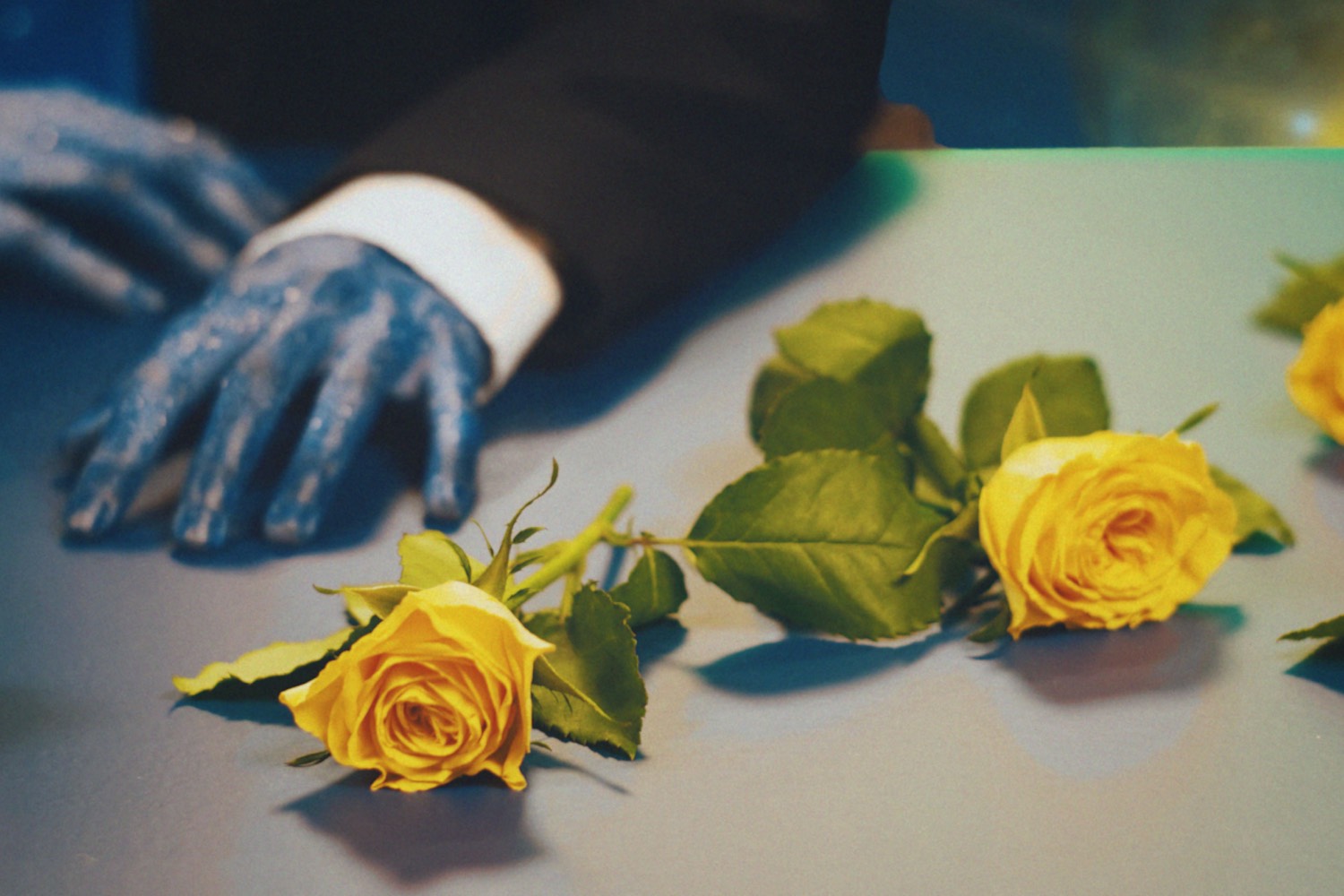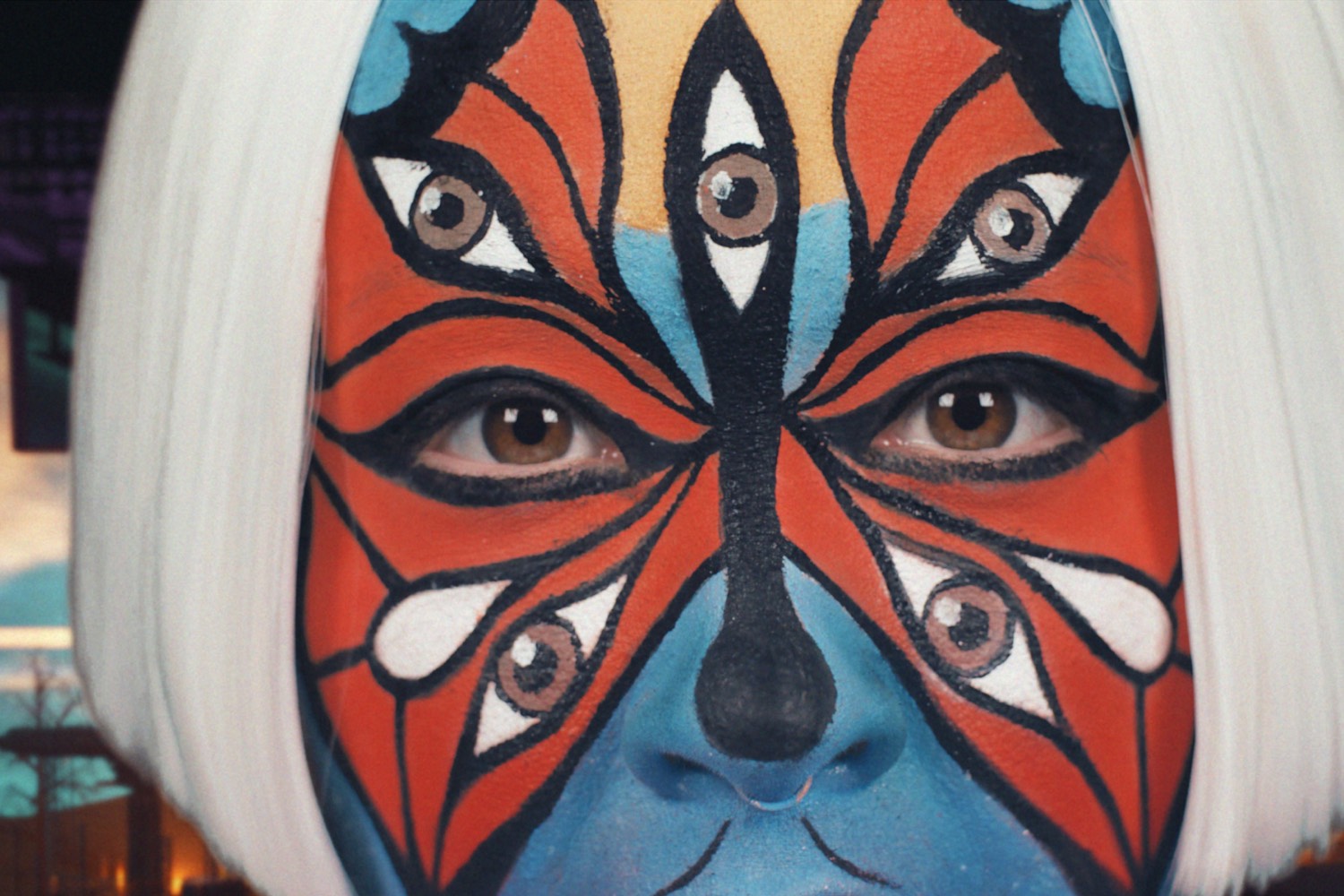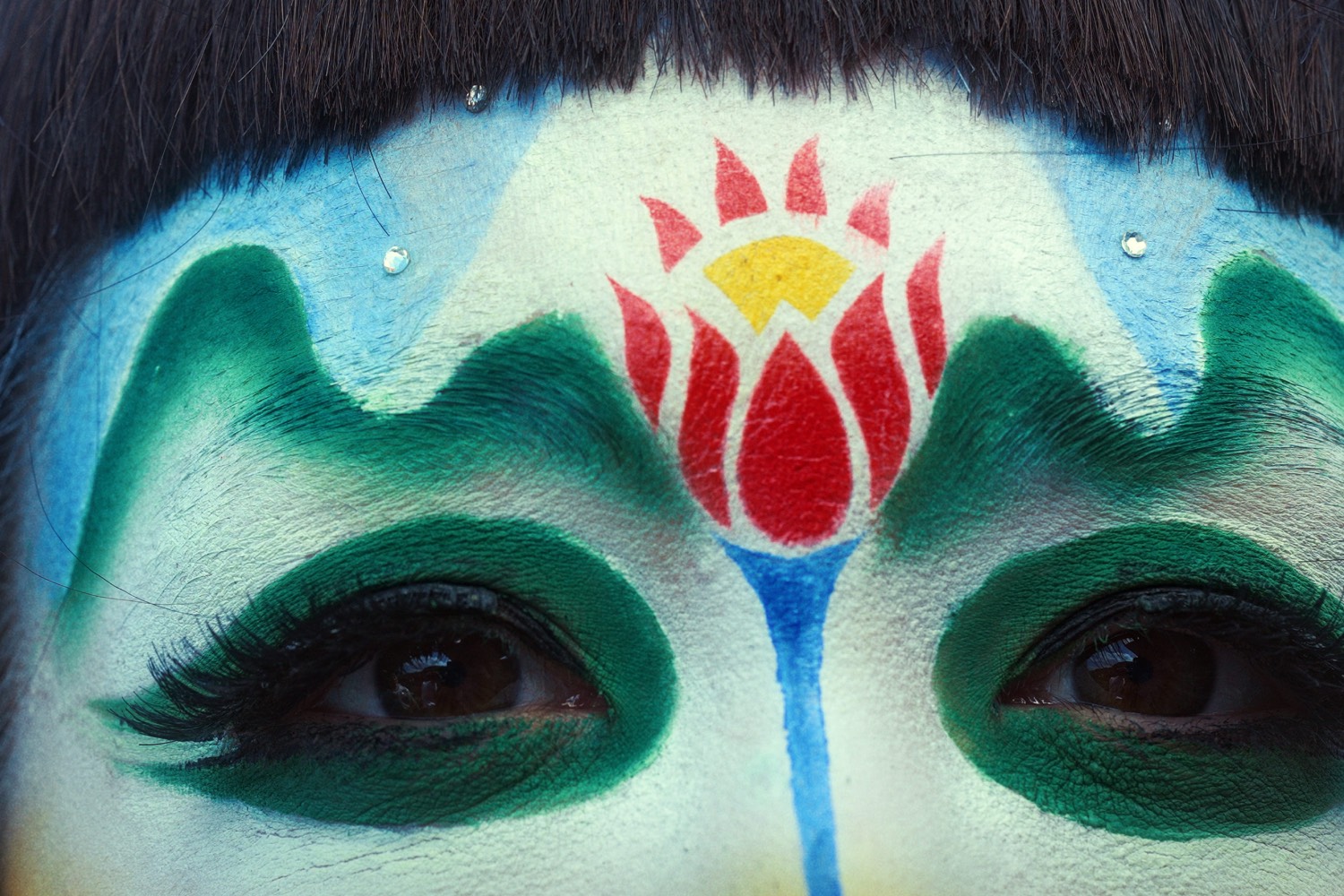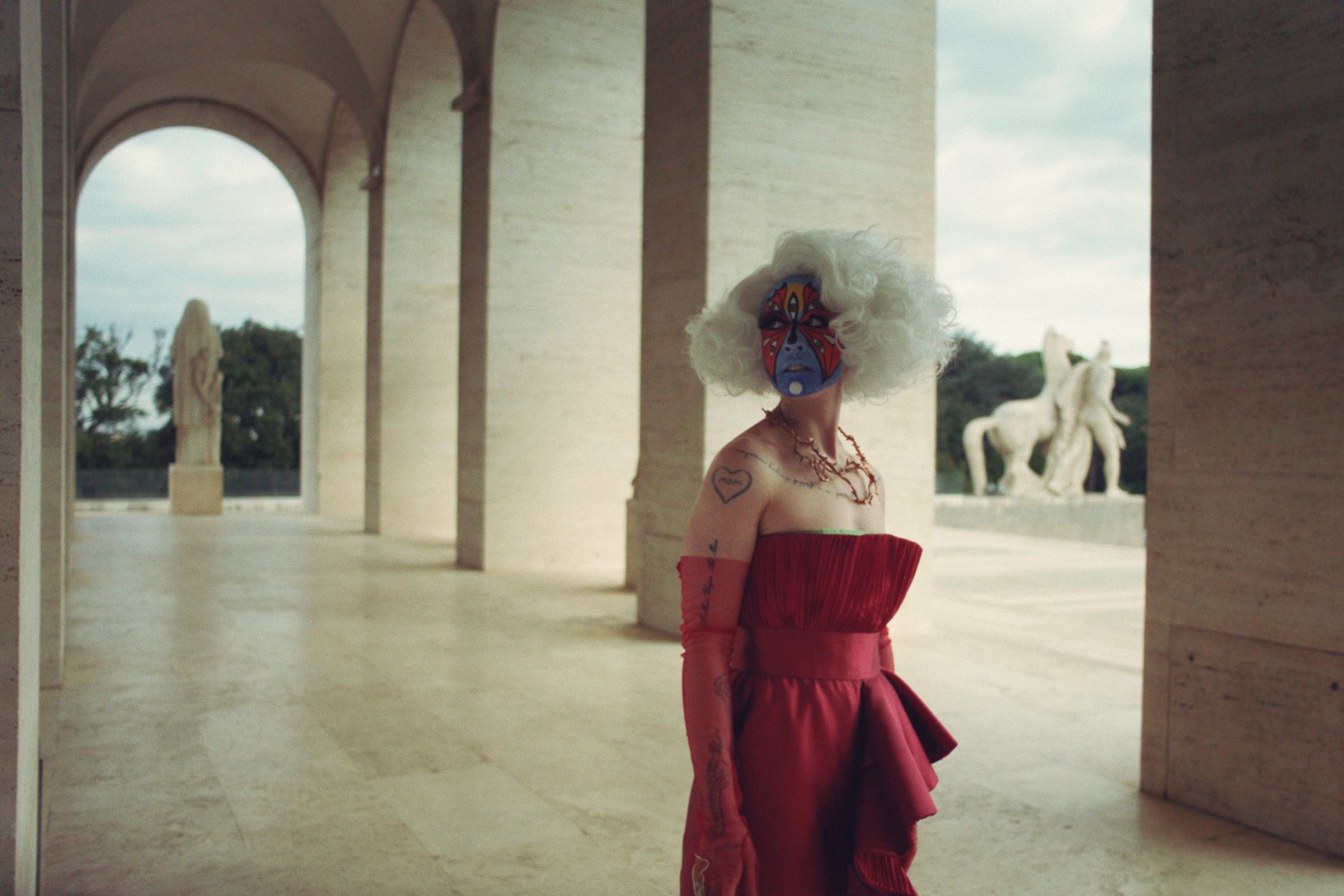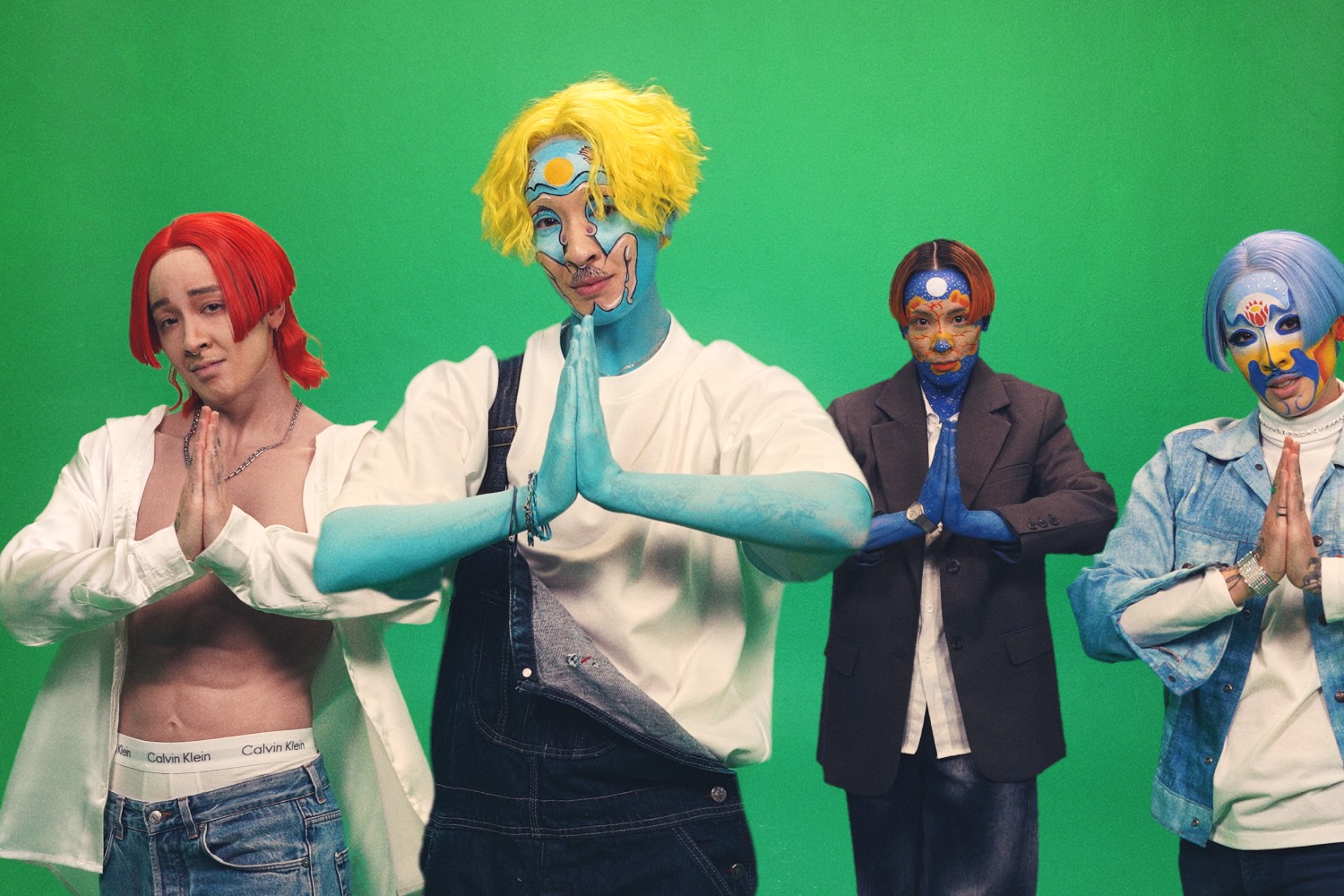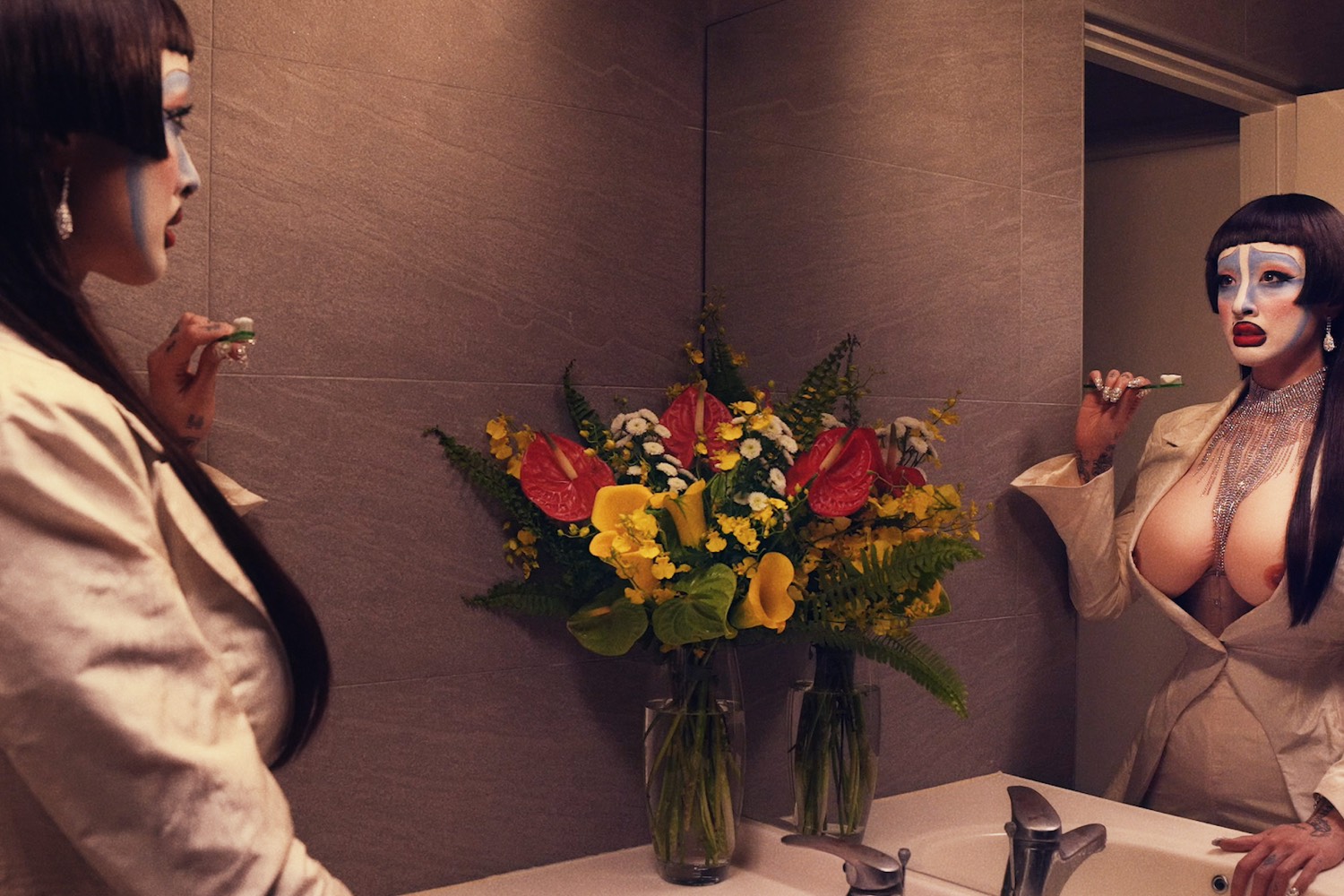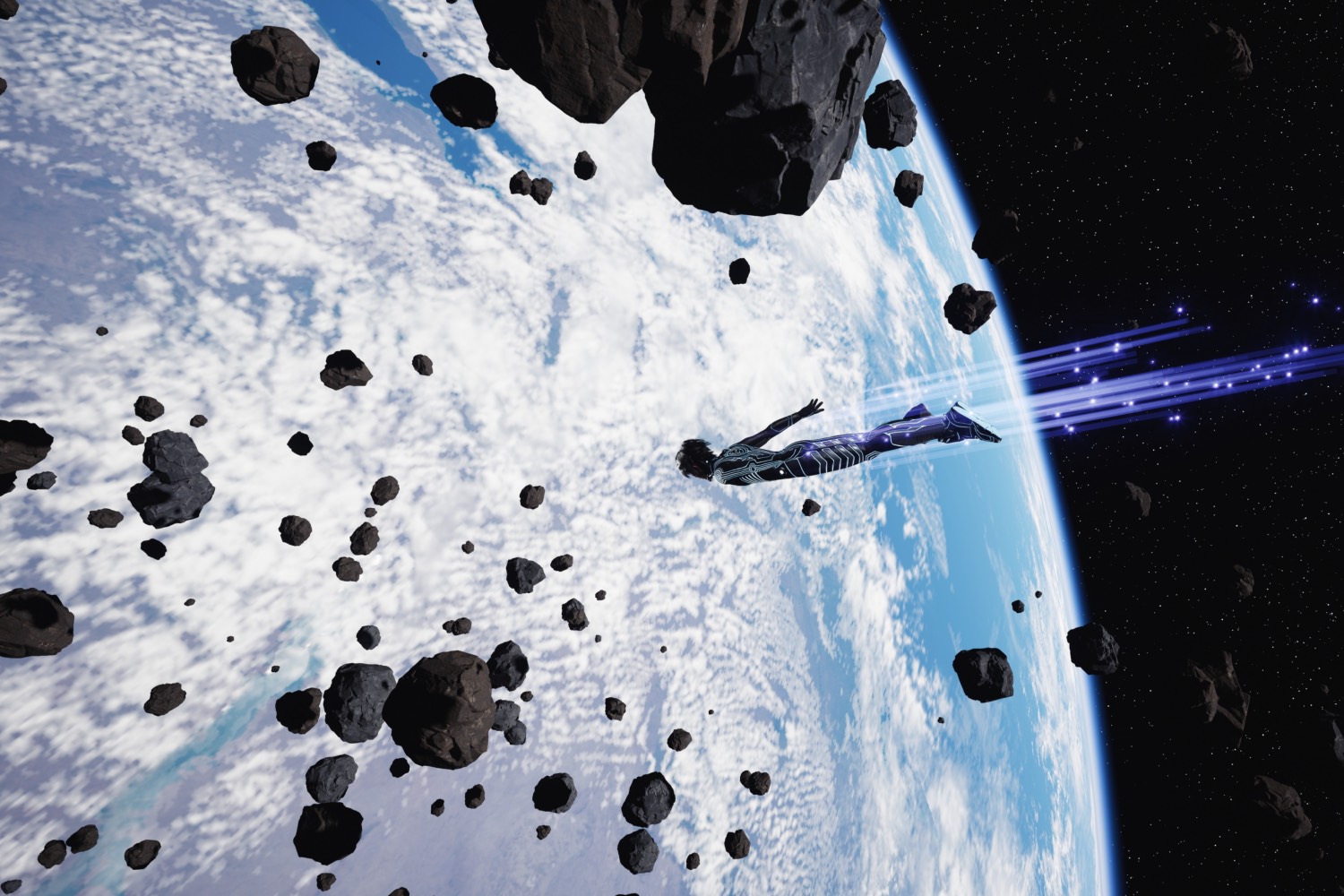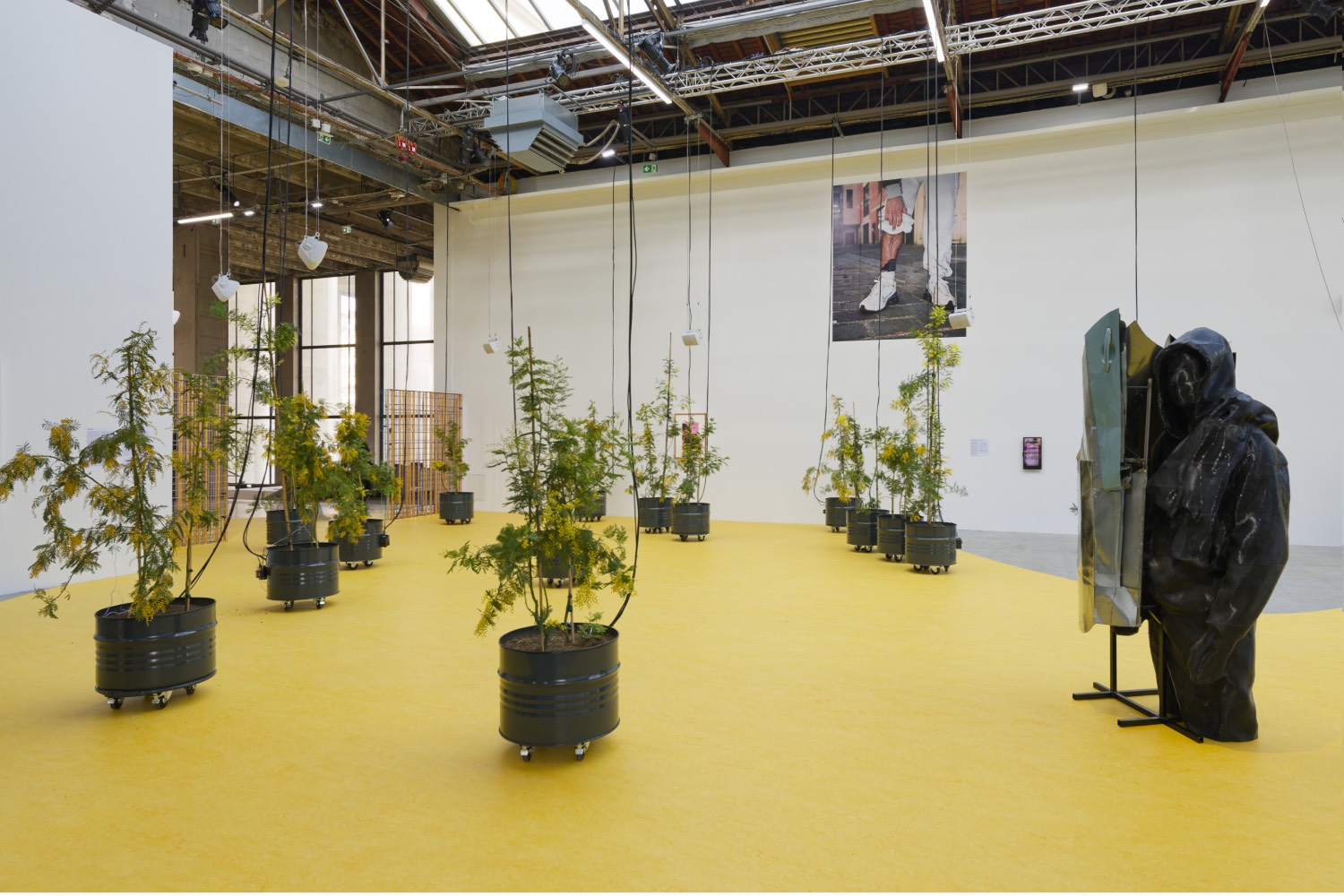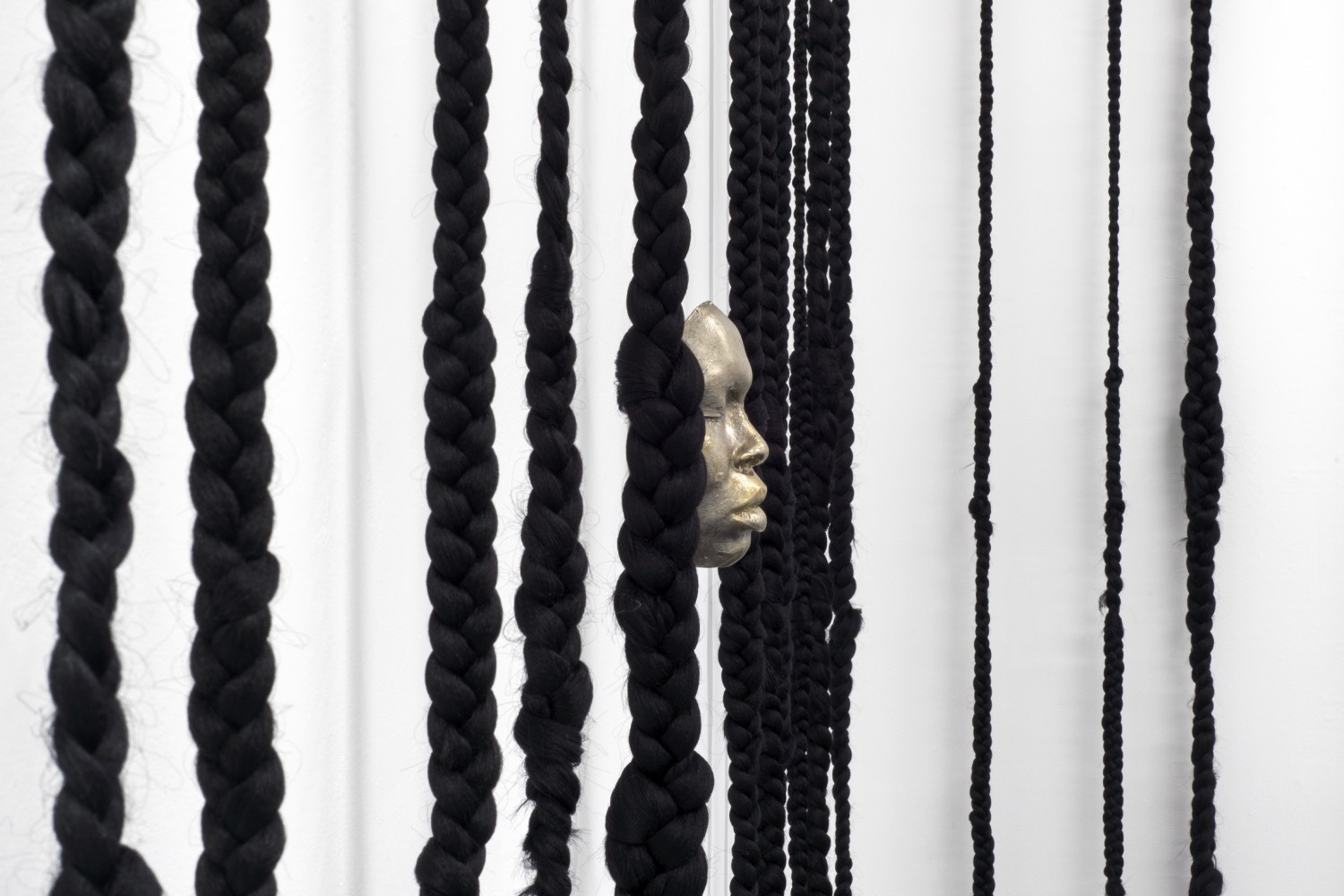1. Can a Word Contain the World?
Language shapes reality; this much we know is true. On a good day, it can be a mechanic of love or mutual recognition — but as Kathryn Yusoff writes in A Billion Black Anthropocenes or None (2018), naming is also a “covering over,” an enclosure, a pinning down. The logic of language follows the logic of capitalism and colonialism: fluid meaning atrophies in the hard edges of what’s signified; what cannot be uttered may as well not exist. It may be more interesting, then, to push language to its limits. What alternative ways of being with the world emerge when no language is left to lose?
Sin Wai Kin has been exploding the limits of language, naming, and knowing for a while now. Body and environment and the futility of distinguishing between such categories are the artist’s barometers, dilated in dizzying speculative fiction narratives with no clear beginning or end. In their work, consensus reality gets pierced as an impossible project. Worlding with drag, performance, and film since 2013, Sin molds cliches into characters that collapse concepts like individualism, gender, and linear time. Trees talk, palazzos become portals, and bodies bleed into their environments; there is a splintering of the binaries between life and death, dreaming and reality, self and world. “There is an impossibility to being an individual in a context, to being one thing that is separate from everything else,” they reflect over a video call in late winter. “I think that is the original binary that we are so messed up by.”
Sin’s speculative fiction tactics take a page from Octavia E. Butler and Ursula K. Le Guin — authors whose stories similarly drew on the otherworldly to critique topics close to home: colonialism, capitalism, and climate catastrophe. At the root of these stories is a desire to unspool the fantasy of the “master narrative” while simultaneously puncturing language as the technology that attempts to hold it all in place. So, too, is Sin’s use of language self-sabotaging: words decay, mutate, and shapeshift while their worlds carry on. Watching Dreaming the End (2023), a nonlinear film shot across a trio of iconic Roman sites — the sculpture-laden gardens of Villa Medici, the sumptuous interiors of Palazzo Ruspoli, and the fascist facade of Palazzo della Civiltà Italiana — I sidle in as a hardbound book is cracked open, its medieval calligraphy flourishing.
“Once there was a name that lived in a name with name,” the narrator reads aloud from the tome. Cut to an unbearable dinner scene where two of Sin’s characters, femme Change and masc Storyteller, face each other over plates of trippy geometric sliced apples. The Storyteller’s harping on, cosmic facepaint shimmering in the dim candlelight, his monologue supplanted with “name” on repeat. Change’s bulbous platinum wig somehow highlights the boredom in her many painted eyes. She short-circuits from the patriarchal droning, demanding: “Are you telling a story? I’m not telling a story, I’m describing a reality,” The Storyteller shoots back, eyes rolling. “Every time you tell it, it changes a little,” she counters, excusing herself from story, building and body.
Ultimately, language is a sense-making system built, as Sin suggests, to “hold other systems in place.” When it gets pushed to parody, other logics begin to unspool; ground truths lose their center of gravity. Sin has explored this elsewhere in The Breaking Story (2022), a six-channel fictive news broadcast that features Change and The Storyteller as news anchors. They rehearse reporting cliches — maniacal smiles, rogue camera bombs, two-second transmission delays — as a trojan horse for Taoist existentialism. “Tomorrow, strong forces may turn your truths into fictions,” Change yells from the backdrop of a stormy sci-fi city, lit up alien green, as she’s buffeted by an airborne newspaper. “There is a 100% chance that you cannot really know anything, so be prepared to change with change.”
“There is a failure to describe any experience that feels truly queer, feminist, or postcolonial with the toolkit we have,” Sin reflects on language. “The tools we have to express ourselves are always reenacting the power structures we already exist in.” Paradoxically, in other words, the use of language implies defeat, a failure to communicate through other means. Sin’s performance piece If I had the words to tell you, we wouldn’t be here right now (2019) — an operatic number merging elements of Chinese and Taiwanese theater with drag but shapeshifts with each iteration, including the 2019 Venice Biennale — captures that exhaustion perfectly in the title alone. To name, is, in a sense, to lose. How do we escape the verbal flytrap of congealed meaning? How do we keep language airborne?
In Language and Reality (1963), Brazilian-Czech philosopher Vilém Flusser suggests: “Languages are open systems that penetrate each other with great ease and promiscuity.” Like Sin, Flusser was a polyglot; like Flusser, Sin writes between languages. The dreamy, strung-out narrative of A Dream of Wholeness in Parts (2019–21) plays with subtitles and spoken word, what’s said and unsaid; switching between English and Cantonese, it penetrates that verbal void; its narrative agents move from human to nonhuman: tree, bowl of noodles, ocean. As Sin’s work makes clear, to exist between languages is to inhabit multiple worlds. The tension of translation is always imperfect. In other words, it’s a way to exhaust the system, to keep the portal open.
2. Always Already Touching
Sin’s entrance into artmaking was doing drag; in their work, as in their life, everything is experienced first through the body. In the early 2010s, while studying at Camberwell College of Arts, they cultivated an outlandish femme drag persona using their dead name. This character accompanied them for five years as they negotiated their relationship with Western femininity by creating an extreme version of this to parody; gender became a skin to be put on and taken off. Through this process, they realized they were not a woman; with a practice so tethered to embodiment, a series of creative shifts soon followed. “That character was a ritual for understanding what I wanted and what other people wanted from me,” they explain. “Then realizing it was a performance that I didn’t want or have to do anymore.”
In 2018, Sin reclaimed their Cantonese name, 慧乾 (Wai Kin). Shortly after, in the pandemic era, their character sheet underwent an expansion pack. Each of these characters can be thought of as a node in the broader ecosystem of Sin’s worlds — from the hypermasc Wai King (flame-red hair, flippantly hot) to The Construct (a delicate pastel-coated Gemini), who collapses the binary of good vs evil, to Change (butterfly facepaint, many unblinking eyes), who changes with change — these characters are embodied ideological states that the artist researches and often aims to undo.
“Identity is a complicated series of relationships,” Sin suggests, reflecting on how their characters evolve in every work. Depending on the occasion, each character will also oscillate from main character to NPC; Sin’s focal character for 2024 is Wai King. Projects like It’s Always You (2021), which earned Sin a Turner Prize nomination in 2022, reveal the artist’s keen interest in the prop-laden lore of worldmaking. The project featured a speculative boy band comprising four of their characters (The Universe, The Storyteller, Wai King, and The One); it included a music video accompanied by paraphernalia that’s dripping in desire — autographed posters with loving fold marks as if torn from a teen mag, and life-size cardboard cutouts of each member.
“Performance and authenticity, life and death, waking and dreaming…” Sin reflects on the ouroboros-like nature of their filmmaking, “There is no separation. Everything is already touching.” Our conversation drifts to the theoretical physicist Karen Barad, who makes the same argument through electrons: queer particles that annihilate the fantasy of the bounded self. I think back to the final scene of A Dream of Wholeness in Parts (2021). Emerging from a heady existential elevator glowing posthuman blue, Sin’s character, The Construct, steps out into a back alley of New Taipei City. She ambles down the miscellaneous nonspace in step to a hazy voiceover narrated by The Universe, who is walking in the opposite direction, two particles drawn towards each other in the dead of night. The Universe and the extreme self pass each other by, making eye contact under the light of the full moon. Yet the film never shows them in the same shot; they coexist between frames, between worlds. Are they always already touching, too?
3. How deep is your world?
“To behold is to be beholden to,” Jenny Odell suggests in How to Do Nothing (2019). Across Sin’s work, deep, almost psychedelic attention is paid to the environment. Interior architectures are maze-like and laconic; the outside world brims with a kind of cosmological consciousness, text overflows, bubbling forward from the ocean, banyans, a bowl of wonton noodles, and classical statues. For Sin, there is an intelligence embedded in this landscape; walking is listening; it is also dissolving. “My characters move through these places and try to understand their place within it,” Sin explains. “They are encountering themselves through the environment; meanwhile, the relationship between these spatial and social bodies collapses.”
Breaking free of the suffocating imperial palazzo and patriarchal Storyteller in Dreaming the End (2023), Change roams the Medici gardens; wobbly classical statues chirp existential riddles: “When the unreal is taken for the real, then the real becomes unreal.” Through these encounters, Change undergoes a series of metamorphoses; their body and identity is penetrated by landscape, ultimately reborn by it. Likewise, in The Story Cycle (2022), shot at Somerset House in London, there is a moment where the imperial architecture collapses; the Clown character plummets downward and encounters The Storyteller, the assumed God of this world, who turns out to be, in Sin’s words, “just some guy in a basement.” In their work, the hierarchy between self and world is inverted; the individual dissolves into the environment, and the world becomes a storyteller.
While the notion of the self dissolves, we also get a lens into deep-time thinking; in their film worlds, Sin creates compositions that wordlessly critique human-made systems. Dreaming the End implicitly digs at the fascist HQ of Moussilini’s Palazzo della Civiltà Italiana as Change flees its arched enclaves to be reborn in a garden of posthuman delight. Sin’s upcoming project for the Lahore Biennale will likewise draw on the worldmaking capacities of architecture, with scenes shot between the Alfalah Theatre and Lahore Fort, sites whose colonial histories are embedded within their built environments. “Lahore Fort especially points to this idea of history-making, the manufacture of “truth” and soft power through architecture,” Sin reflects. “Both spaces reveal this fantasy of a default subject position and how that affects everything else in the world.”
We typically understand the camera as a sensing apparatus: metallic and hard-edged, it roams a scene, gleaning data to produce a paranoid reading of the world. But in Sin’s hands, this device goes off script, becoming porous. In their films, there is no singular narrator to latch onto, no world that renders itself legible and static. Watching their work can be a deeply disorienting experience. It can also be highly generative. In that confusion, beheld jointly by character and viewer, there is a collapsing of persona and topos, body and environment, self and world, and an extension into something else. It’s in that collapse that we catch glimmers of a world that exists in a condition beyond the binary, and it looks back at us with a recognition beyond language. To behold is to be beholden to. To behold is also to be held by.

